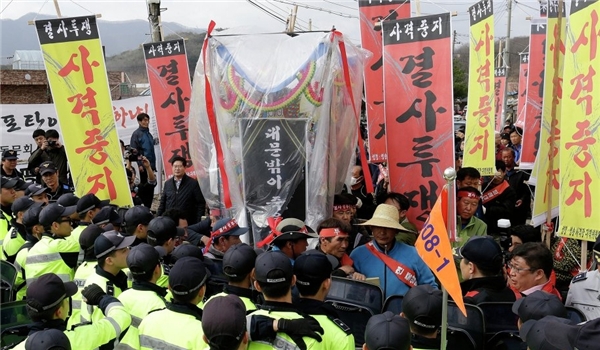Hundreds Protest US Army Stray Shells in South Korea

More than 600 gathered in downtown Seoul, South Korea, on Wednesday to protest stray shells of the US military impacting residents in a town near the heavily fortified North Korean border.
A 3,400-acre multipurpose range complex (MPRC) also known as the Rodriguez Range is home to joint US-South Korean military drills. The most recent exercise, involving 200,000 South Korean troops and nearly 4,000 US servicemen, wrapped up last week, RIA Novosti reported.
According to Yonhap news agency, the protesters, mostly elderly farmers from the town of Pocheon, staged a two-hour demonstration outside the defense ministry building and the nearby Eighth US Army headquarters.
Wednesday’s demonstrations followed Seoul’s formal request two weeks ago for the United States to take action to prevent accidents during military drills in the region.
The latest reported incident occurred in late March when a nonexplosive 105-mm training round struck a nearby house, causing minor injuries to a local resident.
Earlier this month, a group of over 1,000 South Korean citizens demanded $10 billion in compensation for similar incidents over the MPRC’s 60 years of existence.







